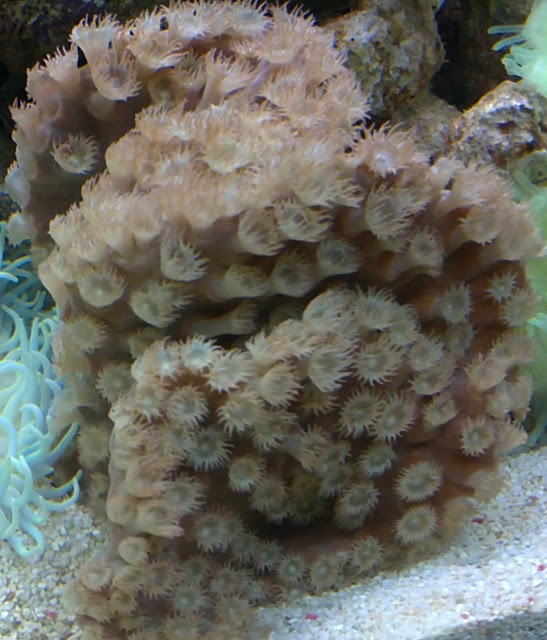Grape - Bubble Coral (Plerogyra Sinuosa)
The Bubble Coral is a beautiful LPS coral that originates from the reefs of the Indo-Pacific. It has a white-ridged hard skeleton that can be seen when the polyps are deflated. When inflated, the large fleshy polyps will cover the entire skeleton, and are white or yellowish in color. Like many other LPS corals, they do posses sweeper tentacles that can harm other corals within reach.
The Bubble Coral requires a moderate level of lighting combined with low to moderate water movement in the aquarium. Too much water flow may impede the coral from fully expanding. The fleshy polyps of Bubble Corals are very fragile and will puncture easily. Be careful when handling these corals, to only handle them by the hard skeleton. Because they can form long sweeper tentacles, be sure to provide plenty of room to prevent damage being done to its neighbors. For continued good health, it will also need the addition of calcium, strontium, and other trace elements to the water with water tempeture below 28 deg.
Chandol - Torch Coral (Euphyllia Glabrescens)
The Euphyllia Torch Coral is a large polyp stony (LPS) coral, often referred to as Trumpet Coral or Pom-Pom Coral. It has long and flowing polyps with single rounded tips which are visible throughout the day and night, hiding its branching skeletal base most of the time. It may be brown or green with yellow or white on the tips of its tentacles. The yellow or white will sometimes appear to glow under actinic lighting.
Provide plenty of room between the Euphyllia Torch Coral and other sessile animals, since at night, its sweeper tentacles can extend up to several inches from its base and sting other coral species. It is moderately difficult to maintain, but it is a popular coral that will thrive under proper conditions and excellent water quality parameters. Ideally, it needs to have moderate lighting combined with moderate water movement within the aquarium. Its aquatic home will also require the addition of calcium, strontium, and other trace elements to the water for its continued good health. It will also benefit from additional food fed weekly in the form of micro-plankton or brine shrimp.
Bicolor Dottyback (Pictichromis paccagnellae)
The Bicolor Dottyback, also called the Bicolor Pseudochromis or Royal Dottyback, is two bold colors; the anterior portion is purple and the posterior portion is bright yellow.
A 30 gallon or larger aquarium should be provided. The Bicolor Dottyback will not be intimidated by other fish and will defend its territory against fish two to three times its size. It will also eat ornamental shrimp and is a predator of nuisance bristleworms.
The diet should consist of meaty foods including brine shrimp and prepared frozen foods




